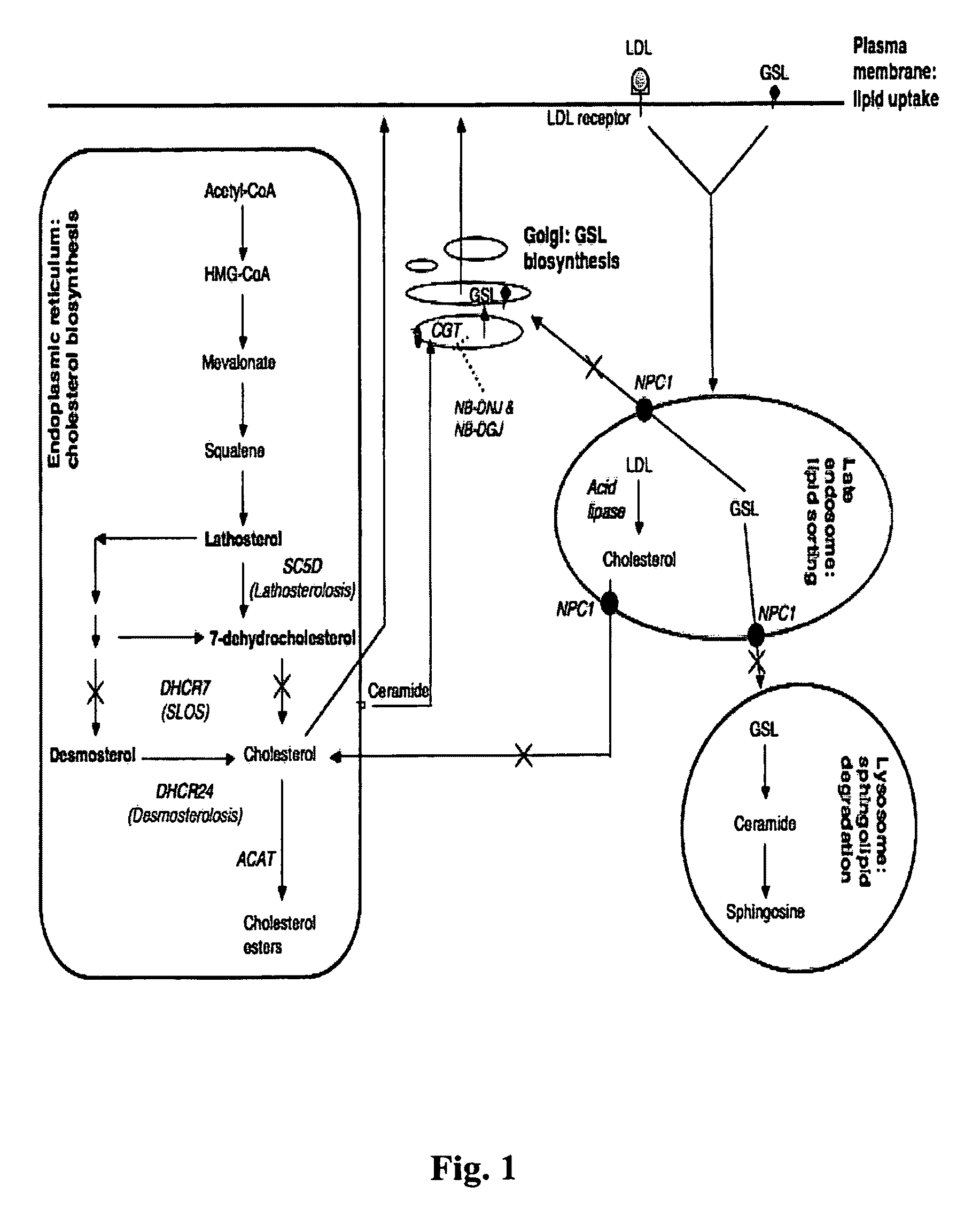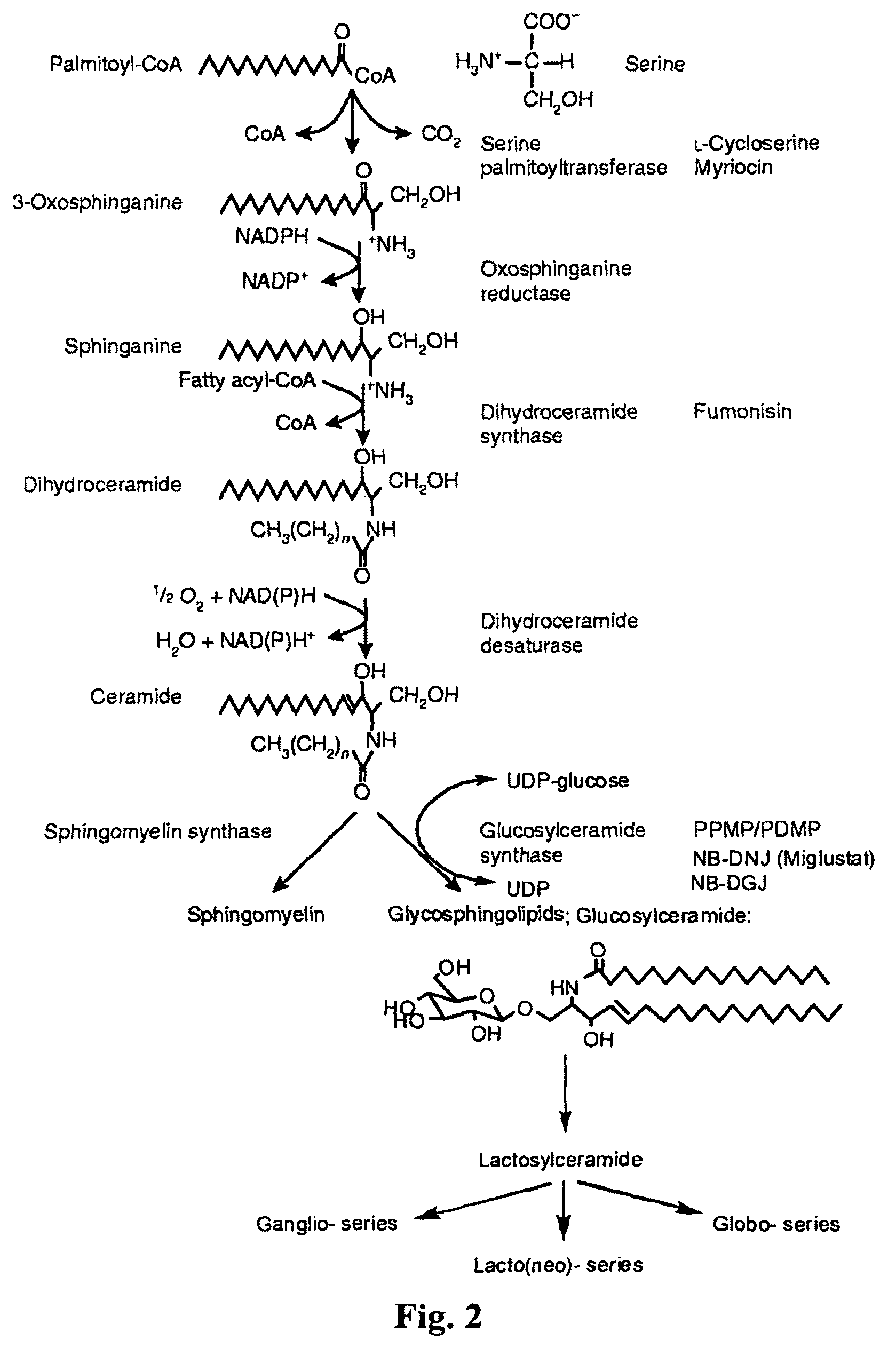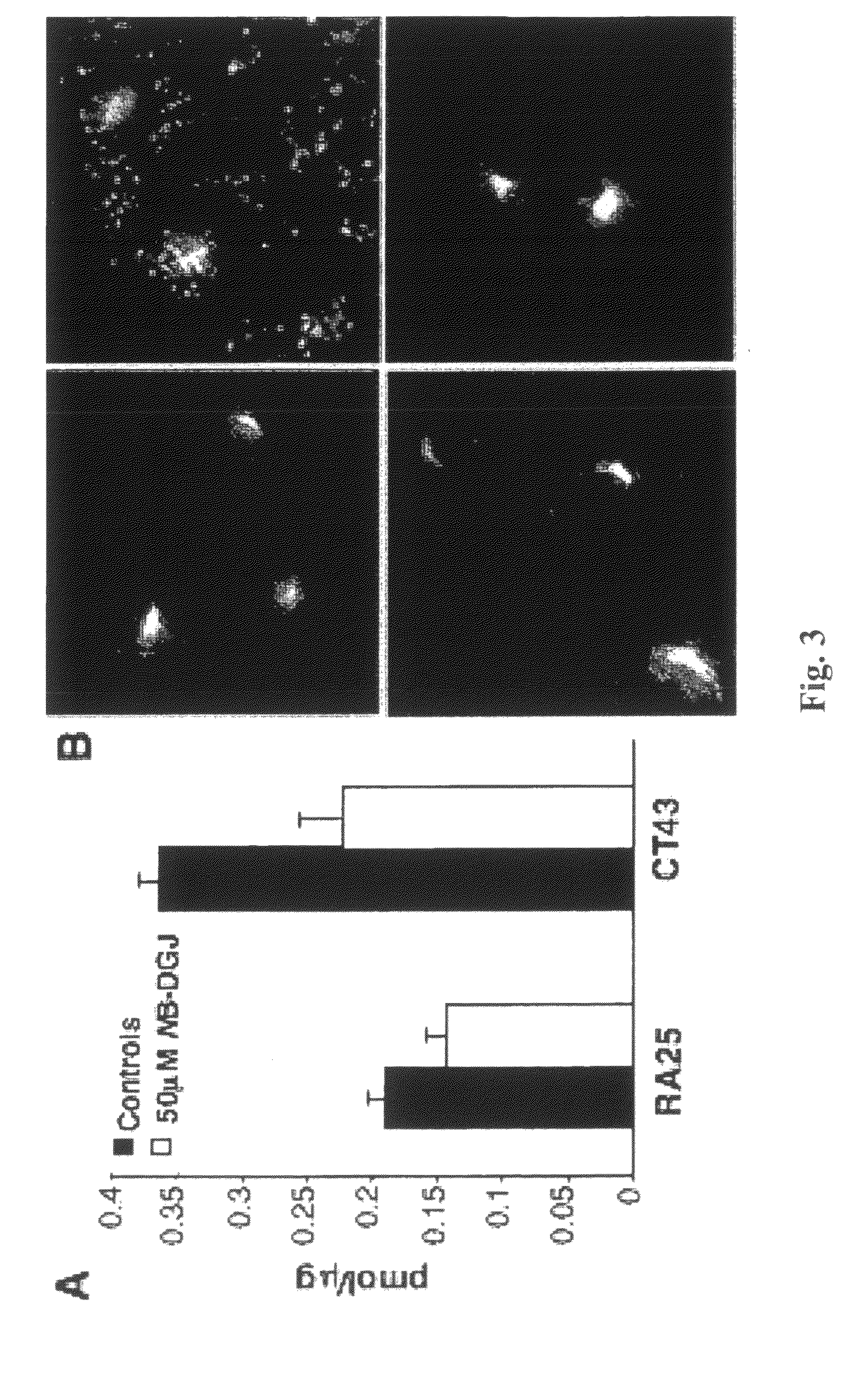Substrate reduction therapy
a technology of substrate and reduction therapy, applied in the direction of drug composition, peptide/protein ingredient, metabolic disorder, etc., can solve the problems of increasing sterol precursors, affecting the majority of slos infants, and reducing cholesterol levels in all cells and tissues, so as to improve the effect of intracellular cholesterol transport defect and potential therapeutic benefi
- Summary
- Abstract
- Description
- Claims
- Application Information
AI Technical Summary
Benefits of technology
Problems solved by technology
Method used
Image
Examples
examples 1 to 4
SLOS has an NPC Phenotype
[0623]A pilot study was carried out on murine embryonic fibroblasts (MEFs), as follows:
example 1
GSL Mistrafficking is Dependent on Cholesterol Reduction / 7-DHC Elevation
[0624]Treatment of cells with AY9944 (a chemical inhibitor of 3β-hydroxysterol Δ7-reductase) leads to accumulation of 7-DHC (Teratology 1996; 54(3):115-25). RAW mouse macrophages grown in medium supplemented with LPDS for 5 days to elevate endogenous cholesterol biosynthesis were treated with 1 mM AY9944 in medium supplemented with lipoprotein deficient serum (LPDS) for a further 5 or 10 days to induce storage of 7-DHC. At 5 days post AY9944 treatment RAW cells showed a slight decrease in cholesterol levels (assessed by filipin, not shown), whereas, at 10 days post treatment, cholesterol levels were markedly reduced (FIG. 4, top panels). This correlated with abnormal transport of a fluorescent GSL analogue of lactosylceramide (LacCer)—BODIPY-LacCer. At 5 days post AY9944 treatment BODIPY-LacCer was transported to the Golgi following a 30 min pulse and 90 min chase (FIG. 4, lower panels). At 10 days post AY9944 B...
example 2
GSLs are Stored in SLOS Cells Due to the Accumulation of 7-DHC
[0627]As SLOS fibroblasts grown in LPDS (to elevate 7-DHC; Mol Genet Metab 2002; 75(4):325-34) accumulate exogenous LDL-derived cholesterol in the LE / Lys system in a similar manner to NPC1 cells, it was assessed whether SLOS cells had altered GSL trafficking. Control, lathosterolosis (Sc5d− / −), desmosterolosis (DHCR24− / −), and SLOS (DHCR7− / −) MEFs were grown in FCS or LPDS for 5 days prior to addition of BODIPY-LacCer to follow GSL transport. BODIPY-LacCer is correctly transported to the Golgi in all cells grown in FCS and LPDS, apart from the SLOS cells grown in LPDS where BODIPY-LacCer is incorrectly localized to punctate late endosomes and lysosomes (FIG. 5A). Normal transport of BODIPY-LacCer to the Golgi in MEF cells from the two other sterol biosynthetic pathway diseases, lathosterolosis (defective conversion of lathosterol to 7-DHC) (FIG. 5A), and desmosterolosis (desmosterol to cholesterol) (FIG. 5A) indicated tha...
PUM
| Property | Measurement | Unit |
|---|---|---|
| pH | aaaaa | aaaaa |
| flow rate | aaaaa | aaaaa |
| emission wavelengths | aaaaa | aaaaa |
Abstract
Description
Claims
Application Information
 Login to View More
Login to View More - R&D
- Intellectual Property
- Life Sciences
- Materials
- Tech Scout
- Unparalleled Data Quality
- Higher Quality Content
- 60% Fewer Hallucinations
Browse by: Latest US Patents, China's latest patents, Technical Efficacy Thesaurus, Application Domain, Technology Topic, Popular Technical Reports.
© 2025 PatSnap. All rights reserved.Legal|Privacy policy|Modern Slavery Act Transparency Statement|Sitemap|About US| Contact US: help@patsnap.com



